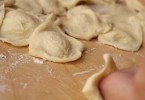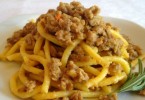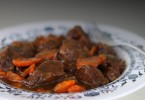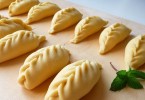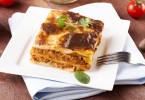From Piedmont’s tables, Bagna Cauda
Bagna Cauda is a typical dish of the grape harvest period, when the cold is coming. However, for its convivial aim, it is well appreciated in every period of the year to dip cooked or uncooked seasonal vegetables.
What is Bagna Cauda?
The history tells that the Bagna Cauda, in Italian “hot sauce”, was the reward for the peasants at the end of the day. They were helping with the grape harvest and they needed nourishing and tasty food, to share with their family and the other peasants, the “dian” the typical terracotta pan full of sauce, from which everyone ate. It was, in fact, a holiday dish, used to share important moments and celebrate holidays and family or friends reunions.
Bagna Cauda is a sauce prepared with few and simple ingredients, unique for its long preparation and the slow cooking which transforms garlic, extra virgin oil and anchovies in a thick sauce. Sometimes, in addition to the three basic ingredients, there are also butter, cream, milk and grinded nuts, that make it creamer, softening the strong taste of garlic and anchovies.
The origin of Bagna Cauda
It is proved that this dish has a long history! It is told that it arrived during the Medieval Period when the merchants of Asti brought salt and anchovy from the Provence, but also this recipe, called in French “Anchoiade”.
The tradition of Bagna Cauda
The sauce was traditionally served in the “dian”, a terracotta pan used to cook it, with an earthenware pot full of hot embers, to keep it warm; today in Piedmont, the use of “fojot” has spread. It is a terracotta pot with a proper room for a small stove.
The sauce has to be hot and it is perfect to dip both cooked and uncooked vegetables such as cauliflower and Jerusalem artichoke in winter and peppers or radish in summer, but also onions, potatoes, steamed carrots and turnips.
Bagna Cauda in Piedmont and the real recipe
For Piedmont’s people it is not only a simple sauce, it is a real institution of the local restaurants, typical of a huge area of Piedmont, Langhe, the Roero area, Monferrato, Cuneo, Alessandria, Asti zone, to the low part of Turin. Each zone and each family personalized its own recipe with small variations or different pairings, as for example cooking garlic in the milk or matching it with cornmeal mush or eggs.
There is, however, a unique and unquestionable recipe: in fact the Cooking Italian Academy of Asti registered it in 2005 through a notary deed, which foresees for each portion: a clove of garlic, a half glass of olive oil and 50gr of Spain anchovies, a piece of butter at the end of the cooking is accepted.




